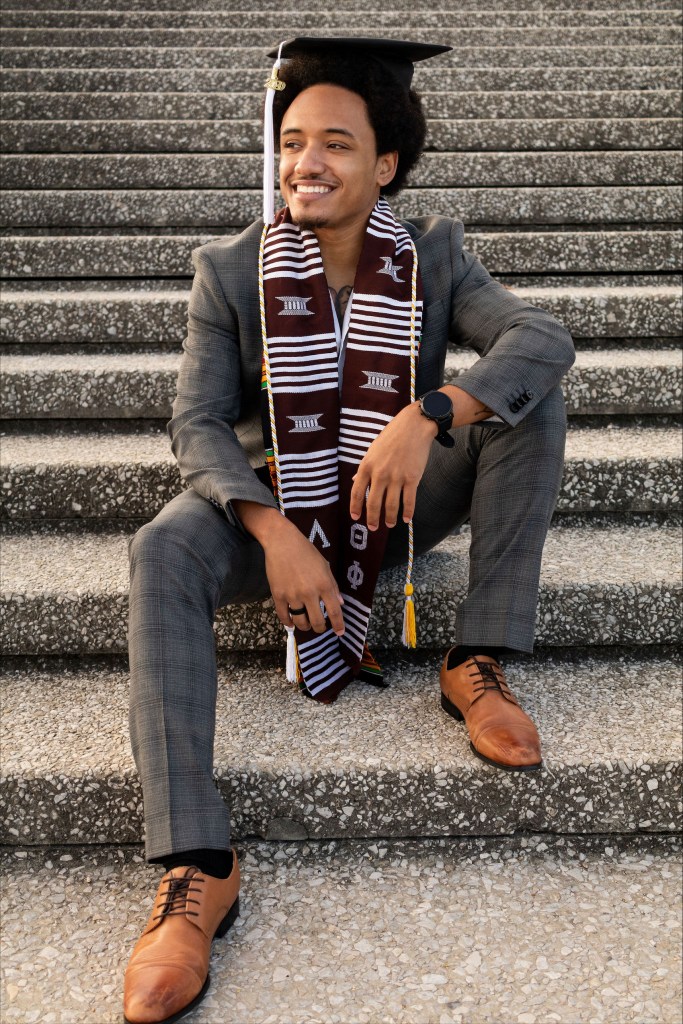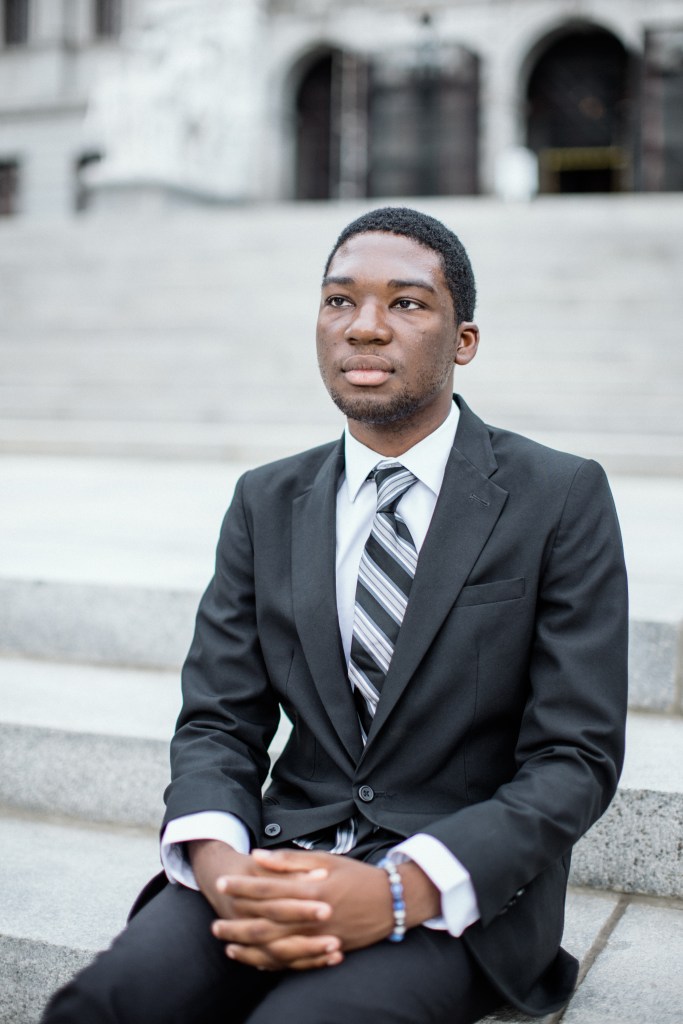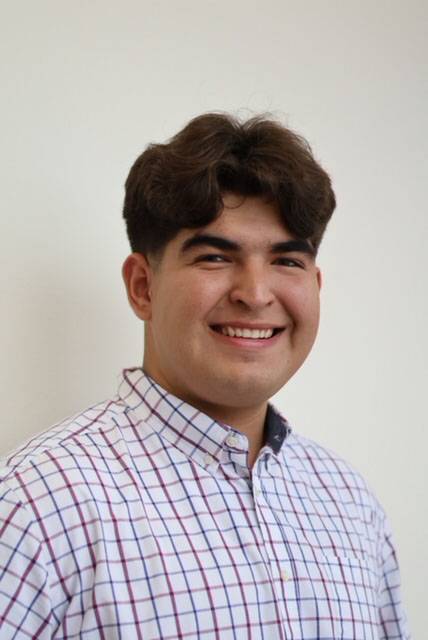On the first day of seventh grade, Elijah Brown clambered onto a bus and watched the tall buildings of the city slowly recede. He was part of a desegregation effort that took him from his predominantly Black neighborhood in St. Louis to a school in the predominantly white suburb of Wildwood, Missouri.

The education was excellent, but students made denigrating comments about where he was from and his race. His mom worked hard – often two jobs – but sometimes there wasn’t enough money for rent. Some nights, he and his mom and sister slept in their car. Some days he could only eat when he was at school.
Brown began to think of the University of Missouri as a way out of hard times. It was the only college he applied to, and he got in – but even with full federal financial aid, he would have needed to come up with thousands of dollars every year to cover the rest of tuition and room and board.
To his overwhelming relief, he was awarded a prestigious George C. Brooks scholarship, which was designed to help students from groups underrepresented at the university and covered about 70 percent of tuition annually.
“It changed my life, it really did,” Brown said.
The scholarship money meant that he didn’t have to work two or three jobs at Subway or the local gym like his friends. Brown graduated in three and a half years, in 2020, with a 3.98 GPA.
“I worked so hard. I was relentless with it, because I felt like I had something to prove,” he said. “I felt so grateful to be getting a Brooks scholarship.”

That scholarship no longer exists. In the wake of the Supreme Court’s 2023 decision to ban affirmative action, Missouri, like many other universities, dropped scholarships that until this year had been reserved for students from underrepresented racial groups, even though the Court’s ruling didn’t mention financial aid.
Students say the money allowed them to attend top colleges that otherwise would have been financially out of reach, putting them on a path to the middle class. The scholarships often included mentorship programs, which helped them succeed. The financial support freed them to focus on their studies without working too many hours. And – crucially – it helped them graduate without loads of debt.
Missouri’s interpretation – that the Supreme Court’s ruling applied to financial aid as well as admissions – swept through a swath of states last year. Colleges have canceled race-conscious scholarships worth at least $60 million, according to data from public universities; the total is likely significantly higher.
In some states, elected officials ordered institutions to change the scholarships in favor of ones that didn’t consider race. In others, universities preemptively made the change, fearing lawsuits from groups eager to test the Supreme Court’s willingness to prohibit the consideration of race not only in admissions but in financial aid as well.
Related: Interested in innovations in the field of higher education? Subscribe to our free biweekly Higher Education newsletter.
But a survey of the country’s 50 flagship public universities – whose stated missions are to provide high-quality, affordable education to the residents of their home states – shows that not all have responded the same way. While at least 13 have changed or eliminated scholarships that took race into account, another 22 have kept them intact, according to spokespeople and scholarships listed on university websites. The University of Wisconsin-Madison would only say that its scholarships were “under review.”
The remaining 14 flagships either never had race-conscious scholarships or use what’s known as a “pool and match” system that honors donors’ requests for race-specific awards without creating barriers to any student who applies.
The University of Iowa changed the Advantage Iowa Award, which last year provided $9.4 million to more than 1,500 high-performing students from underrepresented racial groups, to a purely need-based scholarship. Administrators said they made the changes, “based on the principles articulated by the U.S. Supreme Court.”
The 22 schools that kept the scholarships interpreted the ruling differently.
Pennsylvania State University, for example, decided that because the Court’s ruling “focused solely on admissions, it did not impact Penn State’s scholarship awarding,” the university’s assistant vice president for strategic affairs, Lisa M. Powers, said in an email.
Some experts worry that slashing the scholarships could increase educational disparity, discouraging more Black and Hispanic students from going to college. About 28 percent of Black adults and 21 percent of Hispanic adults have college degrees compared with 42 percent of white adults, the U.S. Census reports.
The changes could also deepen financial inequalities. In 2020, Black college graduates on average owed $58,400 in loan debt four years after graduating – 30 percent more than white graduates, according to the Education Department. Meanwhile, Black college graduates aged 25 to 34 on average earned about 25 percent less than their white counterparts in 2022, making loan repayment more difficult.
Last fall, just 4 percent of incoming freshmen at the University of Missouri, where Elijah Brown went, were Black, down from 8 percent five years earlier. Despite ending two scholarships previously designated for underrepresented students, which were awarded to more than 350 students each year, the university expects an increase in the number of underrepresented students enrolling in the fall, according to Christian Basi who was a spokesperson there until earlier this month. Students already enrolled and receiving the scholarships will not lose them, he said.
Brown says relying on merit for scholarships without considering race will hurt Black students. SAT scores – widely considered a measure of academic merit – for Black, Hispanic and Native American students lag significantly behind white and Asian scores.
“People who say, ‘Oh, our scholarships are all available for everyone now.’ No, they’re not,” Brown said. “They’re still going to go to mostly white people who have already been set up, generations back, for college, whose parents are college grads, and who didn’t only apply to one school because they didn’t know any better.”
Related: How could Project 2025 change education?
After he graduated, Brown worked for the University of Missouri as an admissions representative assigned to recruit students from racial and ethnic groups underrepresented there. He drove to high schools in Kansas City and St. Louis to convince Black and Hispanic students to choose his alma mater over other options, such as colleges closer to home or historically Black colleges or universities.
At meetings with students, Brown told them what he had gained by going to the University of Missouri — from the organizations he joined to the guest speakers he got to hear to the classes he took. He told them about the Brooks scholarship, saying that if they worked hard, they could have the same opportunities he had.
“I was telling them about my experience,” he recalled, “and their eyes would light up, and they’d get so excited, like, ‘Oh, my God, it’s possible.’”
When he heard about the university’s decision to cancel the Brooks scholarship, he was angry.
“I talked to these freshman and sophomore students, and it’s like I lied to them,” Brown said. “They will never be able to get that opportunity at Mizzou. It makes me sick to my stomach that so many of these kids will not get that experience.”

Eyram Gbeddy doesn’t remember any college representatives visiting his Pennsylvania high school during the Covid-laden winter of his senior year, in 2020-2021, but he did get a recruitment email with an offer he thought couldn’t be real.
The University of Alabama wanted to give him a full ride. He visited the campus and fell in love with it. His mom didn’t pressure him, but she was grateful for his decision.
“She told me she was praying that I would go to Alabama because it would be so helpful to the whole family,” he said, freeing up financial resources for his two brothers’ educations.
Alabama’s National Recognition scholarship, which was earmarked for high-performing Black, Latino, Indigenous and rural students, was discontinued starting with students entering this fall. Gbeddy, who is Black, said it had allowed him to concentrate solely on his studies, and he graduated this past spring – in just three years. He will enter Georgetown University law school in the fall, which he said would have been unthinkable if he had been carrying thousands of dollars in undergraduate loan debt (median federal student debt for all graduates of Alabama is close to $23,000).
“When I sit here and I think that there are students who are just like me – who are qualified, who are smart, who would make absolutely wonderful additions to the Alabama community – who aren’t even going to be able to consider Alabama,” said Gbeddy, who is 21 years old. “It’s just heartbreaking to me.”
Just a few years ago, the University of Alabama was touting the Recognition Scholarship and its positive impact on the campus’s racial diversity.
Related: How did students pitch themselves to colleges after last year’s affirmative action ruling?
Black students made up 10 percent of freshmen at Alabama in 2022, while 32 percent of public high school graduates in the state were Black, but that gap has decreased over the past five years.
Gbeddy predicts ending the National Recognition scholarship will reverse that trend.
“When you lose these scholarships that are targeted at Black Americans,” he said, “at people from rural areas, people of Latino ancestry, you lose such a strong recruiting tool for a university that desperately needs it.”
The University of Alabama did not respond to questions about why they canceled the scholarship.
“[T]he University will continue to offer competitive scholarship opportunities to its students in a manner that complies with federal and state law,” the university’s associate director of communications, Alex House, said in an email.
Kimberly West-Faulcon, a professor of law and the James P. Bradley chair in constitutional law at Loyola Law School in California,said decisions to end the race-conscious scholarships can boil down to weighing the possibility of lawsuits against an institution’s commitment to racial inclusion.
“Institutions are making decisions to not defend these kinds of policies,” but to change them, said West-Faulcon. “Why are they changing their policies, instead of going to court and defending them?”
Last year’s Supreme Court admissions decision has indeed prompted a flurry of lawsuits against race-conscious scholarships and a wave of complaints to the Education Department’s Office for Civil Rights by groups like the Equal Protection Project. That group, which sees the scholarships as discriminatory, says it has already succeeded in getting more than a dozen scholarship programs canceled or altered.
Indiana’s flagship was EPP’s most recent target, with a complaint filed in July against 19 private bequests that consider race. For example, one scholarship indicates a preference for an underrepresented minority student with financial need majoring in business and another for an African American law student who has at least one dependent.
“The source of funding does not matter,” William Jacobson, a Cornell Law School professor who leads the Equal Protection Project, said in an email. “The scholarships are promoted by Indiana University to its students, and IU handles the application process through its scholarship portal. As such, it needs to adhere to relevant law governing educational practices.”
A group of white students even filed a class action lawsuit against the University of Oklahoma for its institutional aid program — which doesn’t take race into account. The suit claims that Black students have been receiving financial aid disproportionately.
Still, even with the legal uncertainties, some universities are holding the line.
After consulting with legal counsel, the University of New Mexico decided to keep its National Recognition scholarship, since the Supreme Court didn’t mention financial aid and because the criteria for the National Recognition scholarship in particular are set by the College Board.
Last year, 149 Indigenous, Black and Hispanic high-performing students received these selective scholarships at the University of New Mexico, each worth about $15,000 per year. The graduation rate for students who receive those scholarships and the university’s other top merit-based scholarships ranges between 80 percent and 95 percent, the university said, compared with 52 percent for all students.

For Diego Ruiz, the scholarship, which is enough to cover tuition, fees, dorm costs and books, has been life-changing.
“I can go to school and graduate and not have any debt,” said Ruiz, who was salutatorian of his Albuquerque high school and is entering his second year at the University of New Mexico. “This is all I wanted. This is all my parents wanted.”
Ruiz had considered going out of state for college, but the scholarship kept him in New Mexico. His mom’s family has lived in the state for many generations, mostly in rural areas, and his dad’s parents emigrated from a small town in Mexico. He is studying public health and wants to find ways to improve access to health care, especially in the rural areas of New Mexico.
He plans to go to graduate school in a medical field, which he says will be easier since he won’t have debt after college (this semester he’ll be working 20 hours a week on campus).
“I’m just really interested in trying to give back to the community that raised me,” said Ruiz, who is 19. “I’m super interested in battling the disparities that we have in New Mexico.”
Brown, the Missouri grad, just finished his first year at the University of Virginia School of Law. This summer, he worked at a top law firm and earned more than his mom does in an entire year.
In May, he took his entire family to a soccer game in St. Louis. He bought them jerseys. He gave them his credit card so they could buy whatever they wanted from the concession stand. “It was the first time in my life I’ve ever seen my mom and my stepdad so stress-free,” Brown said.
“My mom loves me so much… I’m just so happy I can give back to her,” he said, fighting back tears.
“I feel so blessed, because this is a life I could never have dreamed of growing up,” he said. “I’m just so grateful for my education.”
This story about scholarships based on race was produced by The Hechinger Report, a nonprofit, independent news organization focused on inequality and innovation in education. Sign up for our higher education newsletter. Listen to our higher education podcast.




Interesting article and varied points about what students are doing to access historically uneven admission practices in the US, given the changes to the Supreme Court ruling on Affirmative Action. What could provide more context and nuance are the following:
1. Replacement of the outdated term “underrepresented”, which places the accountability on systematically marginalized people to address the injustices of the centuries-old laws and practices, rather than the majority, which remains the reason for the lack of diversity in these educational institutions and spaces. Another perspective from N. Chloe Ngwangu’s “Why We Should Stop Saying ‘Underrepresented'” article in the Harvard Business Review https://hbr.org/2023/04/why-we-should-stop-saying-underrepresented
2. The reason behind the Supreme Court ruling, why is the controversy surrounding Affirmative Action still so contentious? What laws were in place that necessitated these measures in the first place? Why are there civil rights offices/departments in every federal agency?
3. Why are SAT/ACT scores considered biased and not an accurate measure of knowledge? What are the SAT/ACT questions based on? Where does one see these questions? Who takes Advanced Placement (AP) courses? Who is excluded from AP courses? Where are AP courses offered?
4. The admissions panels at universities – how many implement implicit bias training for their employees, panelists?
5. Secondary education in the US is uneven in public schools at best, even with the advent of the Next Generation Science Standards and core-curricula; nor is it aligned with basic post-secondary attainment. How does the US Department of Education plan to address this basic injustice, where most children are educated in this system?
I could go on, however, one can see the many flaws in the secondary education system, and then the competition for the few higher eduction spaces becomes even steeper, and removing scholarships and Affirmative Action is not the answer. Post-secondary education should be free. That would be a start to leveling the field.